will insulating the roof keep intense sun heat out?
yellowpups
15 years ago
Featured Answer
Comments (17)
sierraeast
15 years agoterry_t
15 years agoRelated Discussions
figuring out sun and how much sun!?!
Comments (24)Hi Julianna - Of COURSE I'm interested in what you're growing! This "bright shade" situation is most interesting and will require experimenting. I started this thread LESS than a month ago and already I see a difference in the number of hours the back of my balconies get sun. On the same token, the sun spots for the items hanging off the balcony are also lengthening. Right now, due to the containers I used for most of my succulents being bulky, they've been placed to the back of my patio where they get a brightness all day long (bright shade, as you called it) but direct sun is for but an hour plus a day? I have to wait and see how these do moving forward... This is balcony 1 -- the one with full sun up front. I bought a bunch of those white balcony pot hanging thingamagics -- and it's pretty useful. It's smaller than balcony 2, but deeper. What's not shown is that further in to the left, you have two shelves full of plants--where most of the succulents are as well as my infamous gardenia, which Purple has been helping me with, haha. This was taken moments ago and today is a bit stormy and cloudy but it's still bright out there at 3:30 pm. This is balcony 2. It's significantly wider with about 3-4 feet MORE to the left than is shown here; that part is obviously full shade. The remainder is all less full sun than balcony 1 and in the afternoon, it quickly goes into no sun as to the right of this balcony, the building juts out with an overhang to the lobby area below. That seems to block out the sun instantly. Unlike you, my area requires me to bring in virtually nothing as we rarely hit 40* and if a plant's lowest tolerance is 50* (which is basically our entire winter) -- then either I don't get it, or it evolves quickly, haha. Thank God, because my house is full enough with houseplants -- I need outside plants to come in like I need a hole in the head. I was browsing some ferns yesterday! Are they hard to grow? I have a Venus Maidenhair here inside, but I don't believe I've ever had ferns in my yard. In the past when I had homes, I've usually had full sun and have much, much less experience with shade plants. I'm messing with the idea of hostas and I'm definitely getting some coleus and begonias, but on balcony 2 - where most of my shade gardening would be -- you can see that the depth of the balcony is minimal; putting large pots out there means no walking area. This puts a damper in my idea of creating cascading containers w/ spillers, etc. I might have room for... uh, ONE. After all of this, I'm of the mindset to move back to a house, haha. I find myself driving around town and looking at homes to figure out, "Is that yard facing south? No, wait...east?" It's sad, really!! Your post is missing photos. I'd love to see!!!!!!!!!!!! -Grace....See MoreIs heat or sun the problem?
Comments (27)It's work, but its work I like. The hardest thing is keeping it weeded. Once weed seeds get imported with new plants, they are there to stay. Sometimes I discover grace errors in plant selection as well, like the 20 foot Hong Kong Orchid tree (Bauhinia) I just dug out and removed this week...the size wasn't the problem, I could easily keep it pruned, but it became infested with mealybugs and I tried everything (I mean EVERYTHING) but I couldn;t get rid of them. Bayer Systemic for trees didn't work, Neem didn't work (the leaves of Bauhinia don't 'hold' moisture, it just slides off) Soap didn't work, Cygon, Orthene and Isotox didn;t work, and coffee didn't work. So out went this huge tree, in sections. There was enough root mass left to plant the tree in the yard though. It will grow here, I only had it in the greenhouse for effect by the streamhead. The speckled plant in photo #7 is a Neoregelia bromeliad, growing under the green and white variegated Philodendron. There are other spotted broms in photo #8, they are all Billbergias The pink flowers in #11 are from a small blooming Phalaenopsis orchid that is mounted on a log spanning the stream. This particular species Phal makes keikis (baby plants)on long stolons so it is slowly spreading in that while area....See Moreattic roof fan and insulation for flat-roofed rowhouse
Comments (15)Thanks guys. Let me see if I can provide a clearer picture of what I'm working with. The house is over 100 years old--a brick row house in the center of a block. Most walls and all the ceilings on the third floor are plaster, with lots of lumps and bumps and a few small cracks, but mostly solid. There are no ceiling moldings. To call what is above this floor an attic is a an exaggeration. It is a space that ranges from about 3 foot tall at the front of the house to about half that at the back of the house (roughly 40-feet on that floor...first and second floors have a bigger footprint and do not need insulating between living space and roof.) There is a central air (newish high-velocity, narrow tube) system that snakes around the "attic". The blower is installed at the one access point there had been. This system serves ONLY the third floor and has two outlets in each of three small bedrooms and one in the tiny bathroom. The system serving the first and second floors is in a second floor closet. The insulation guys tell me that they can blow insulation in but will need to cut at least one new mansized hole in the ceiling to get in--possibly two, one toward either end. There are no recessed lights on the floor, and only three overhead lights at all. All other lights are wall brackets, wired from the floor up, rather than from the ceiling down. Of the three overheads..one was put in new by me, so isn't K&T. One the previous owner says was moved by them, so isn't K&T (But may connect in to K&T at the meeting of wall and ceiling. And one is the bathroom overhead, which can easily be checked. My electrician replaced the fixture there, so he should know what's above it. The roof is asphalt and fairly new (say 5 years old?) so, I'm not inclined to want to replace it anytime soon. I've gotten a quote for $950 to cut an access whole and blow in insulation. I'd have to pay someone else separately to fix up the access panel afterwards, probably adding another few hundred. Most neighbors don't even try to do much of anything with ventilation in their "attics", as they are all scared witless of cutting holes in their roofs. But I have found info on the Brooklyn Brownstoner blog about successful attic and whole house fan installations and one neighbor loves the whole house fan he has which sits in a sort of plastic cove on the roof. Unfortunately, he bought it with the house and has no idea who installed it. I don't intend to move in the near future, or even the more distant future. But I would like to make the third floor more habitable in the summer, especially since at some point in the next two years or so, I'd like to turn it into a separate apartment and rent it. Honestly, I seem to be finding such conflicting information and I'm so dubious about how knowledgeable folks you hire to do this stuff are about old and "out of the norm" houses that I really, really, do appreciate any and all help I can get here on this forum. Thanks,...See MoreScience of Roof insulation: what does frost tells us?
Comments (10)The math can get tricky and that high % is mainly associated with walls not roofs or foundations. Those elements have their own problems that are more associated with air-leakage, the biggest energy performance killer to be aware of. Even that 25% number could be small potatoes compared to the air leakage coming through the window or between the window unit and rough framing. If you think the can foam that people use in this location is effectively stopping all air-leakage.. think again. Eco-panels is our most local manufacturer. They are one of a few SIP companies to use Polyurethane foam. Not only does this foam have one of the highest r-values per inch, they inject it between the OSB sheathings and this process lends itself to a different attachment system which reduces thermal bridging. One of my favorite things about them though is that they are available with the huber zip exterior sheathing upgrade which makes it easier to tape the exterior seams. Did I mention air-sealing is more important than thermal bridging? 3 Hrs away is actually pretty close for a manufacturer. You dont use the same criteria for windows do you? Eco-panels ships all over the world and interestingly, the owner told me about a project they are working on for an aid organization in N Korea! The bigger problem is how close is the experienced installer? Builder comfort is important for these systems too. Iam not really a fan of ICFs, mainly because the pre-cast concrete panel company in our area eats them for lunch in almost all criteria. For energy performance, most of them dont meet 2012 IECC minimums for cold climates. A few do and its the exterior foam thickness that's of most importance. The interior foam does not seem to contribute much to its performance but worst of all, it blocks easy access to all that expensive thermal mass of the concrete! Here is a link that might be useful: Eco-Panels polyurethane SIPS...See Moremeldy_nva
15 years agoyellowpups
15 years agoneff2k
15 years agomodernhouse
15 years agogarymunson-2008
15 years agomepop
15 years agosierraeast
15 years agochris8796
15 years agosierraeast
15 years agogreg_h
15 years agoyellowpups
15 years agowoodinvirginia
15 years agogreg_h
15 years agomightyanvil
15 years ago
Related Stories
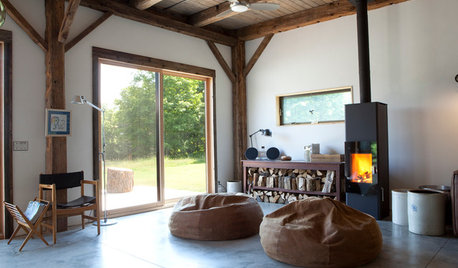
GREEN BUILDINGInsulation Basics: Heat, R-Value and the Building Envelope
Learn how heat moves through a home and the materials that can stop it, to make sure your insulation is as effective as you think
Full Story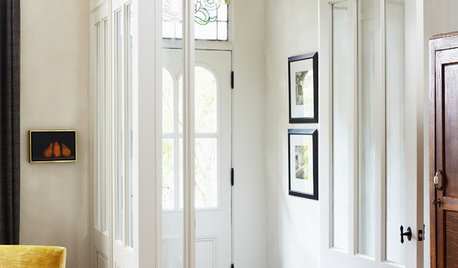
FEEL-GOOD HOMEStop That Draft: 8 Ways to Keep Winter Chills Out
Stay warm without turning up the thermostat by choosing the right curtains, windows and more
Full Story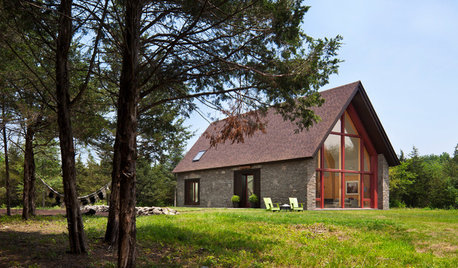
GREEN BUILDINGInsulation Basics: Designing for Temperature Extremes in Any Season
Stay comfy during unpredictable weather — and prevent unexpected bills — by efficiently insulating and shading your home
Full Story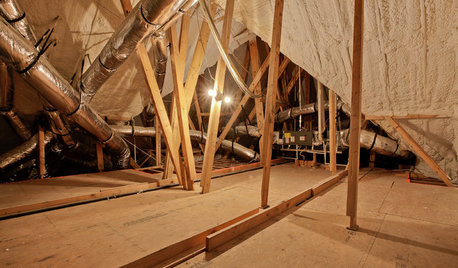
GREEN BUILDINGEcofriendly Cool: Insulate With Wool, Cork, Old Denim and More
Learn about the pros and cons of healthier alternatives to fiberglass and foam, and when to consider an insulation switch
Full Story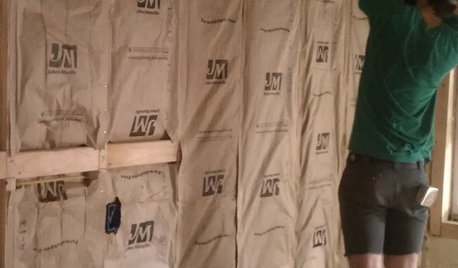
REMODELING GUIDESCool Your House (and Costs) With the Right Insulation
Insulation offers one of the best paybacks on your investment in your house. Here are some types to discuss with your contractor
Full Story
GARDENING GUIDES10 Drought-Tolerant Shrubs That Thrive in Full Sun and Reflected Heat
Got a hot spot in your garden where plants often die? Try these tough shrubs that add beauty while shrugging off the heat
Full Story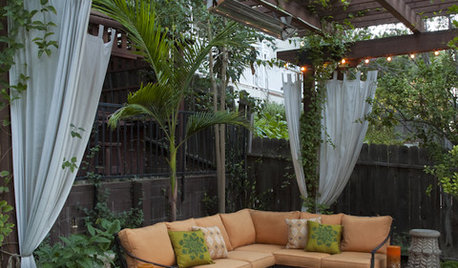
GARDENING AND LANDSCAPINGChill Out: 10 Cool Ways to Beat the Heat Outdoors
Step away from the A/C's artificial blast — and treat yourself to these more natural cool-down methods in the great outdoors
Full Story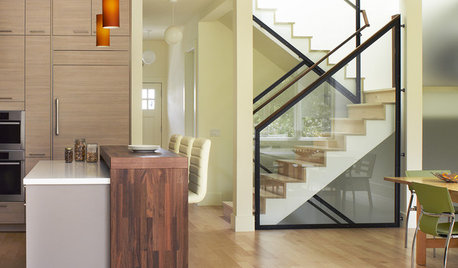
FLOORSIs Radiant Heating or Cooling Right for You?
Questions to ask before you go for one of these temperature systems in your floors or walls (yes, walls)
Full Story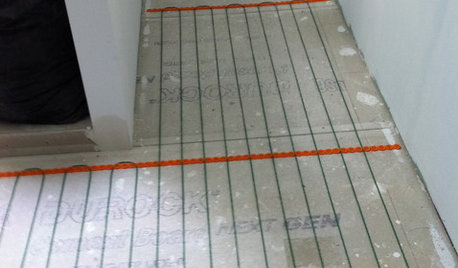
BATHROOM DESIGNWarm Up Your Bathroom With Heated Floors
If your bathroom floor is leaving you cold, try warming up to an electric heating system
Full Story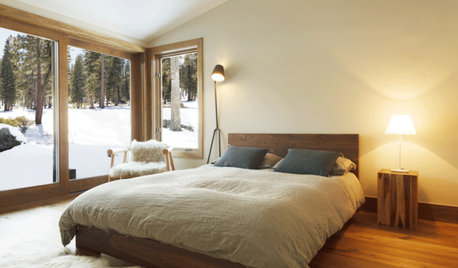
WINDOW TREATMENTSEasy Green: 9 Low-Cost Ways to Insulate Windows and Doors
Block drafts to boost both warmth and energy savings with these inexpensive but effective insulating strategies
Full Story




sierraeast